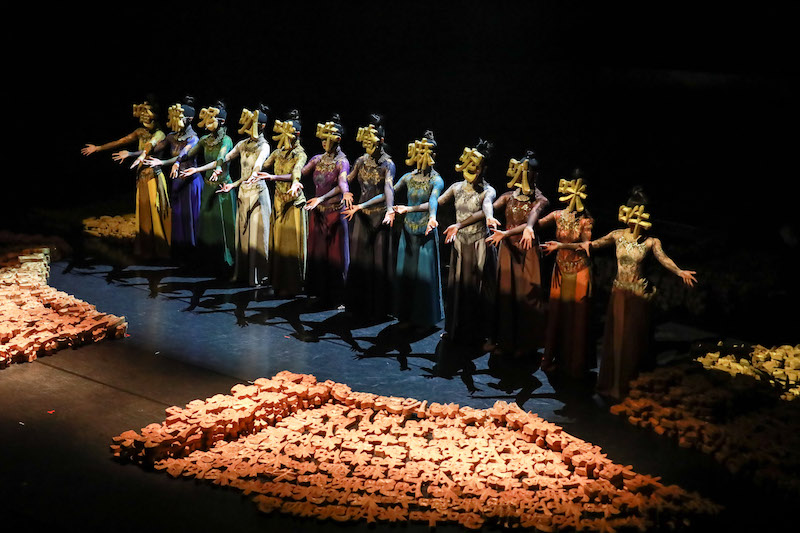Yang Liping’s Rite of Spring is as much an education in Eastern aesthetics, religion and philosophy as it is a performance work. While it’s a visual feast, this expanded interpretation has many layers of meaning to digest that aren’t necessarily immediately apparent to Western audiences. Filtering its symbolism, staging and style through occidental dance sensibilities without that knowledge can limit appreciation of Yang’s choreography and complex storytelling.

Yang Liping’s Rite of Spring. Photograph © Justin Nicholas
My frustration at only finding general descriptions of the work online beforehand was magnified when I collected a second program on exiting the theatre that provided a detailed statement of Yang’s vision. By explaining the deeper purpose of the work’s imagery and composition, the characters and colours, this guidebook enhanced my understanding, but knowing this in advance would have enriched how I experienced the performance, so it’s a shame it hasn’t been uploaded. (It requires more than a skim to absorb, and given the performers are onstage when the audience enter the auditorium if you want the benefit I’d suggest arriving early to read it while outside.)
Drawing inspiration from both Chinese and Tibetan beliefs and symbols, Yang...










Comments
Log in to join the conversation.